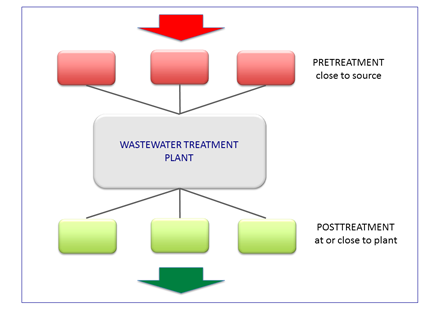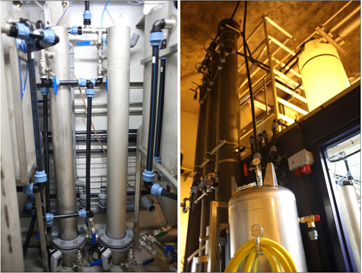Wastewater Treatment

The efficiency of the wastewater treatment plant (WWTP) removal of undesired substances will today be supported by technology implementations both upstream and downstream of the existing plant. To remove in-going particulars and hereby relieve the main treatment systems from occasional heavy loads, measures of preplant treatment instalments are added close to the pollution sources. Furthermore, a WWTP cannot always capture all critical substances by present technology wherefore also postplant installations (or plant extentions) are desired.
Research
Interreg Central Baltic CleanStormWater project
Interreg Central Baltic CleanStormWater project started in February 2020 with the goal of reducing the inflow of hazardous substances to the Baltic sea by improving the stormwater treatment solutions in the central baltic area. The department of industrial biotechnology, School of CBH, KTH is one of five project partners. For this project the EU funded 1.626.163 Euros (of which 1.316.485 euros ERDF).
The CleanStormWater project aims to develop new stormwater treatment solutions by planning, constructing pilot treatment plants and implementing water quality management to limit the inflow of hazardous substances and toxins into the Baltic Sea.
The project tackles centralized and decentralized stormwater treatment provisions and e-monitoring facilities for water quality management and the main action will be carried out at the pilot sites in each project partner country.
The pilot plants will be constructed in sub catchment areas in Estonia, Finland and Latvia and will test new technical solutions for stormwater treatment equipped with an e-monitoring system to evaluate real time stormwater quality data for operative responses in emergency cases. In Sweden we are working with Utposten at Utö and using their wetland as a study site to evaluate the efficiency of wetland systems.
The project will ultimately result in novel and innovative practices for urban stormwater management and sustainable solutions for the central Baltic region. By providing competitiveness and technological development for stormwater treatment solutions and monitoring systems, increasing awareness for water quality. Henceforth, the project results will have a direct positive impact on the quality of the environment in and around the Baltic sea.
Leading partner: Viimsi Rural Municipality Government
Partners:
Estonia: Tallinn University of Technology
Finland: Turku University of Applied Sciences
Latvia: City of Riga, City Development Department of the Riga City Council
Sweden: KTH Royal Institute of Technology
More information can be found at
Contact person: Gunaratna Kuttuva Rajarao
gkr@kth.se
Antonius Van Maris
tonvm@kth.se

Measures to reduce the character and amounts of toxic waste at the source
Forestry and agriculture based on monocultures demand protection against insects and pathogens. Plants are generally protected by the use of pesticides, which constitute a threat to humans and other organisms, in particular water living organisms. Many pesticides end up in the water environment. We use a strategy promoting the plants own defence mechanisms, by treatment of seeds and young seedlings already in the greenhouse to prepare them for stressful outdoor conditions. Plant defence activity is associated with epigenetic mechanisms which are hereby the target to improve the plant defence.
Contact
Post treatment close to the plant
In Sweden, the most common way for pharmaceutical substances (API’s) to reach the environment is via the municipal wastewater. The pollution is transferred to the WWTP:s that hereby constitute the barrier towards discharge into the aquatic environment. During 2005-2009, 78 of 90 target API’s were detected in the ingoing water to a WWTP. Almost all of these were also present in the outgoing water (Stockholm Water, 2011). It is further acknowledged that API´s can be of environmental concern and in 2012 the European Commission included three API’s in the observation list of priority substances.
To remove these substances we have built and are now operating a test facility for API removal in close connection and collaboration with selected WWTP:s. The methodology used includes oxidation and adsorption techniques. One goal is to provide a design manual for API removal in the WWTP:s.
Contact

